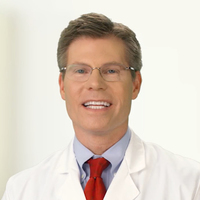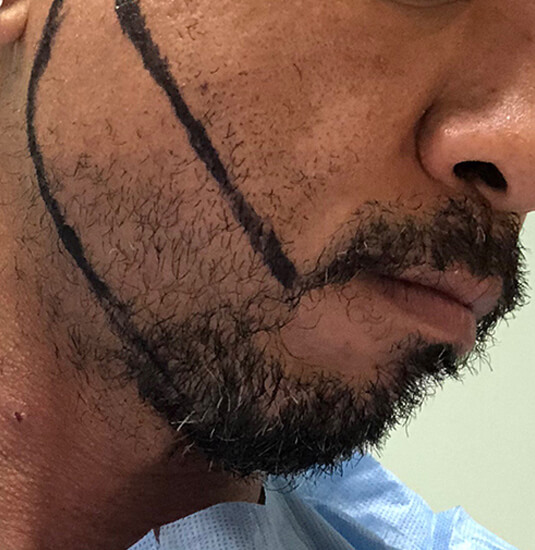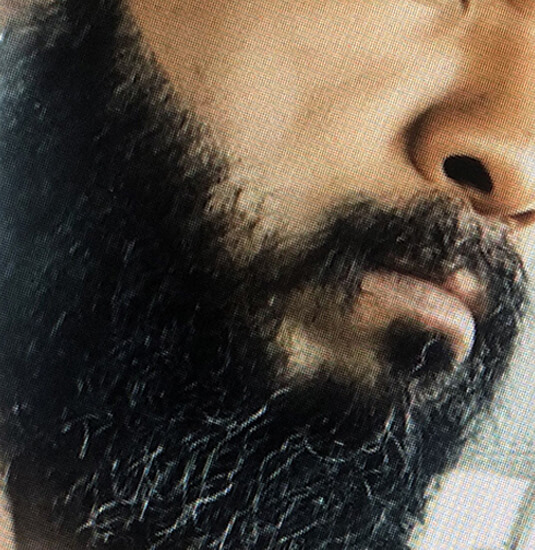
Medically reviewed by Dr. John Rosdeutscher – Written by Sine Thieme
Are you in your early 20s and considering a beard transplant to help along your reluctant facial hair or to fill in unsightly patches? If the answer is yes, you are not alone. At Nashville Hair Doctor, including our practices in Memphis and Louisville, we have helped many patients of that age group grow a fuller beard using NeoGraft FUE hair restoration. But is it wise to have a beard transplant under the age of 25, a time when many men are not yet able to grow a full beard – or should you wait?
Is it wise to have a beard transplant under the age of 25 or should I wait? When is the ideal time for a beard transplant?
Our Nashville Hair Doctor team has helped many patients answer this question and achieve fuller growth of facial hair without jeopardizing their future ability for a hair transplant. Below, we give you an opportunity to learn more about the stages of beard growth and explore the beard transplant options available to you.
What Causes Beard Growth?
The hormone testosterone is responsible for beard growth. When boys enter puberty, this begins the cycle oftestosterone production. But this is not a simple off/on switch. Testosterone builds up over time, with its effect on the hair follicles actually coming quite late in the process of puberty. As a result, boys tend to struggle to grow a beard at a time when it might be the most desirable to them, especially given the current fashion trends towards more rather than less facial hair.
Most men report a thickening growth of facial hair at the age of 25 and higher. Where you fall on the spectrum of thickening beard growth depends on your genetics. Some men are able to grow full beards in their teens, and others have to wait until their late twenties – but in general, the trend is the same: Thickening growth over time until about the age of 30.
Does Beard Growth Increase With Age?
As we have shown above, beard growth does indeed increase with age – up to a certain point. The hair follicles on the face react to the presence of testosterone in the body, or rather dihydrotestosterone, better known as DHT. DHT is what powers hair growth – without it, there won’t be any beard.
Starting at around 30 years old, beard growth in men typically begins to decline. Testosterone production begins to drop by a few percentage points every year and DHT levels decline. This will eventually lead to a thinning out of the beard. Again, how fast this progresses can be very different from person to person. You might have trouble growing your beard until the age of 28 and then enjoy a nice full beard for many years to come. Or you might see it losing thickness at an alarming clip after 35.
The Stages of Beard Growth
It’s also important to know that parts of the beard may come in at different times. Again, this can vary wildly from person to person. You might be great at growing a mustache but what you really want is a goatee, and we all know how frustrating it can be to be on a fashion trend from five or even just three years ago.
Typically, the stages of beard growth do follow a pattern that looks something like this:
- After onset of puberty at a 11-12, the first facial hair emerges at either side of the upper lip.
- By 16-17, this growth spreads over the entire upper lip.
- Around the same time and up until around 18, hair starts extending down from the sideburns as well as the spot under the lower lip.
- From 17-21, it continues to spread to all of the lower face to form a full beard.
To get back to the question at the beginning of this article: Should you go for a beard transplant in your early 20s to thicken your beard, when in all likelihood your beard will thicken on its own a few years down the road?
Should You Have a Beard Transplant in Your Early 20s?
The answer is that it’s really up to you. You won’t harm anything by having a beard transplant at a young age. But if you’re just a bit more patient, your facial hair will likely thicken on its own as you approach age 30. If hair restoration isn’t feasible for whatever reason – cost often being a major factor at that age – you shouldn’t be too discouraged.
If you do have a beard transplant in your early twenties, you will simply have your naturally expected growth earlier, and then experience the same thickening you would have without the transplant.
The only downside of not waiting for the natural thickening is that you are in fact depleting your donor hair. For men, the hair at the back of the head is DHT-resistant, meaning it is unlikely to ever fall out. That is the area hair is extracted from for both hair and beard transplants. The hair restoration technician extracts grafts strategically from the donor area to thin it out just enough to get the needed follicles, but without it being noticeable.
Beard Transplant Now vs Hair Transplant Later
Who is to say what the hair on top of your head will do 10 or 20 years down the road? Are you genetically blessed with a full head of hair well into your 60s and your only challenge is growing a beard at a young age? Then having that beard transplant is a great fix.
But what if you will experience substantial hair loss and/or a receding hairline at a relatively young age, say, in your mid-thirties? Perhaps by then the hair on top of your head seems more important to you than that youthful beard, and you might wish you’d have saved it for an actual hair transplant. We are not saying you can’t have both – most people have enough donor hair for a repeat procedure. It’s just something to keep in mind – to think about your priorities of facial hair vs hair on your head.
If you are interested to find out more about beard transplants, please contact us at Nashville Hair Doctor or simply upload a few pictures for a FREE beard transplant quote.


